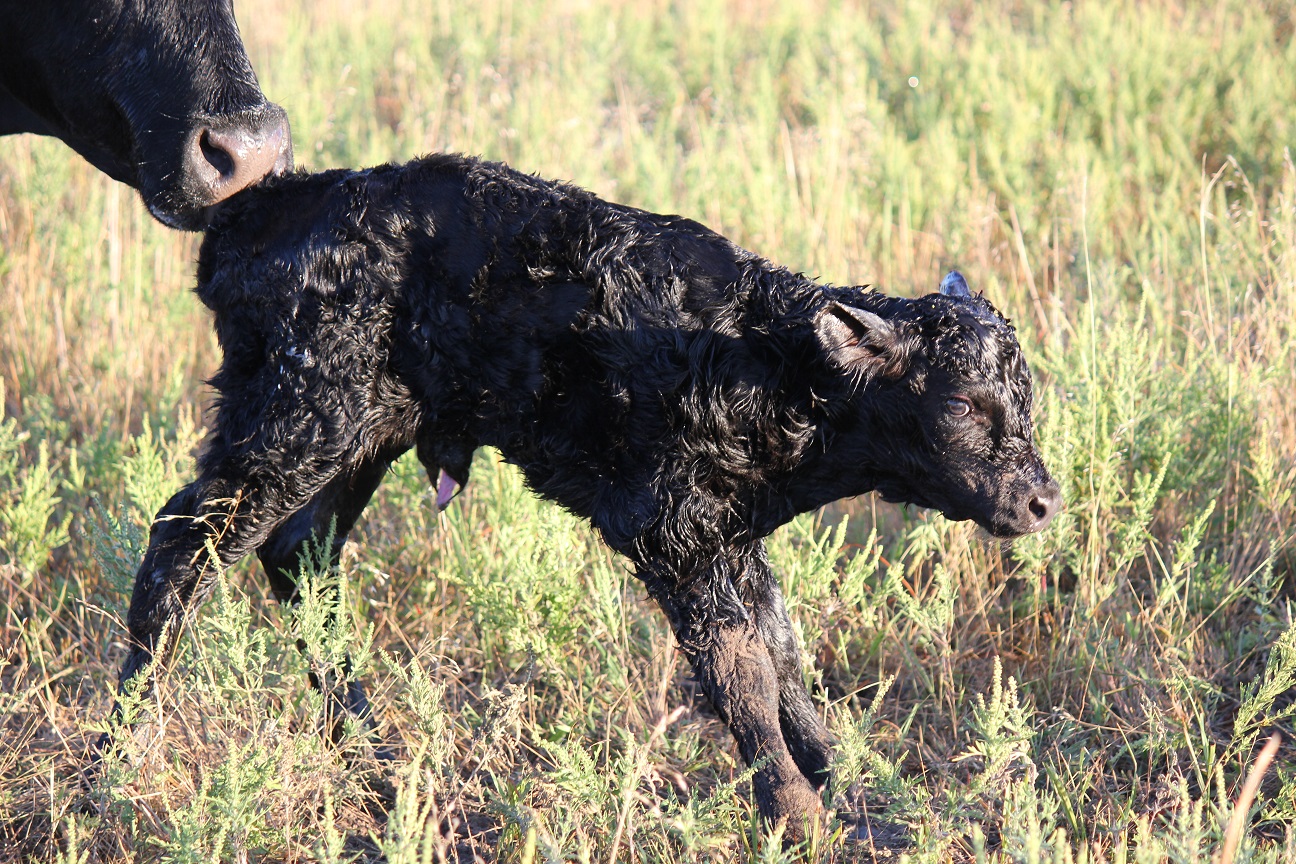
By Aaron Berger, Nebraska Extension Educator
This article is a brief summary of a paper titled “Calving and Handling Calving Difficulties” (https://go.unl.edu/f2q9) by Robert Mortimer DVM, who is Emeritus Faculty at the Colorado State University College of Veterinary Medicine Biomedical Sciences. The paper is summarized by Aaron Berger, Nebraska Extension Beef Educator.
The process of birth for a calf and the first few hours after the calf is born is a critical time that is foundational to a calf for success or failure later in life. Calf losses in the beef cattle industry frequently occur due to calving difficulty. Stress on the calf due to calving difficulty leads to an increased likelihood of sickness and death loss later in life. Calves experiencing difficulty at calving tend to have a harder time maintaining a normal body temperature after they are born and also have a diminished ability to absorb antibodies from colostrum. When producers understand the process a cow goes through when a normal calving occurs, they can identify problems that require intervention. Timely identification of problems and appropriate intervention during a calving difficulty improves the likelihood that a live calf will be delivered.
In the “Calving and Handling Calving Difficulties” paper, Dr. Mortimer outlines 3 things that cow-calf producers should be aware of related to the calf during the delivery process. These are presentation, position and posture.
• Presentation refers to how the calf is coming, frontward, backward or transverse (crosswise).
• Position refers to whether the calf is right side up or upside-down.
• Posture refers to the relationship of the calf’s legs and head to its own body.
Based on understanding these three things, the producer can identify the process which will need to occur to either assist a cow with a calf in a normal presentation or correct an abnormal presentation to deliver the calf through the birth canal.
Dr. Mortimer outlines four management decisions that impact the outcome of calving difficulty. These four decisions are:
• Frequency of observation
• When to intervene
• Identifying if the calf can be delivered vaginally by forced extraction
• When to call for professional assistance
Dr. Mortimer gives a detailed process producers can go through to aid in their decision making as to when to assist a cow in labor and identify if they have the skills needed or should call for professional assistance. Dr. Mortimer gives practical tips and suggestions for facilities, equipment and procedures that can be helpful to producers to increase the likelihood of delivering a live calf. Timely decision making of when to call for professional help is the most important factor in increasing the survivability of the calf and the cow.
A new crop of calves is something cow-calf producers look forward to each year. Preparing ahead of time and having a plan for how to handle calving difficulty can help minimize calf loss. Reading through the “Calving and Handling Calving Difficulties” (https://go.unl.edu/f2q9) publication is a good way to review the calving process and consider ways to increase success should cows need assistance during calving.
To listen to BeefWatch podcasts go to: https://itunes.apple.com/us/podcast/unl-beefwatch/id964198047 or paste http://feeds.feedburner.com/unlbeefwatch into your podcast app.